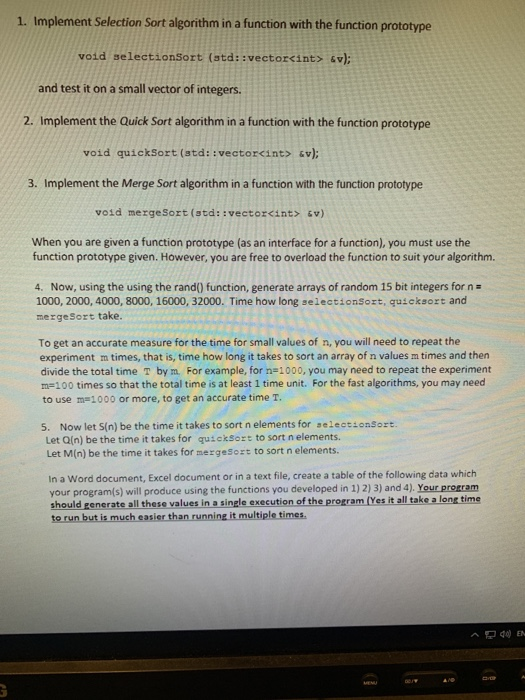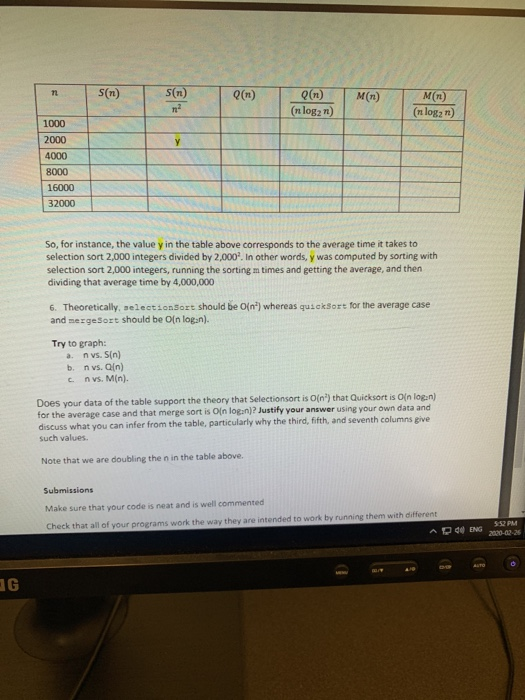Answered step by step
Verified Expert Solution
Question
1 Approved Answer
1. Implement Selection Sort algorithm in a function with the function prototype void selectionSort (std::vector int> &v); and test it on a small vector of


Step by Step Solution
There are 3 Steps involved in it
Step: 1

Get Instant Access to Expert-Tailored Solutions
See step-by-step solutions with expert insights and AI powered tools for academic success
Step: 2

Step: 3

Ace Your Homework with AI
Get the answers you need in no time with our AI-driven, step-by-step assistance
Get Started


